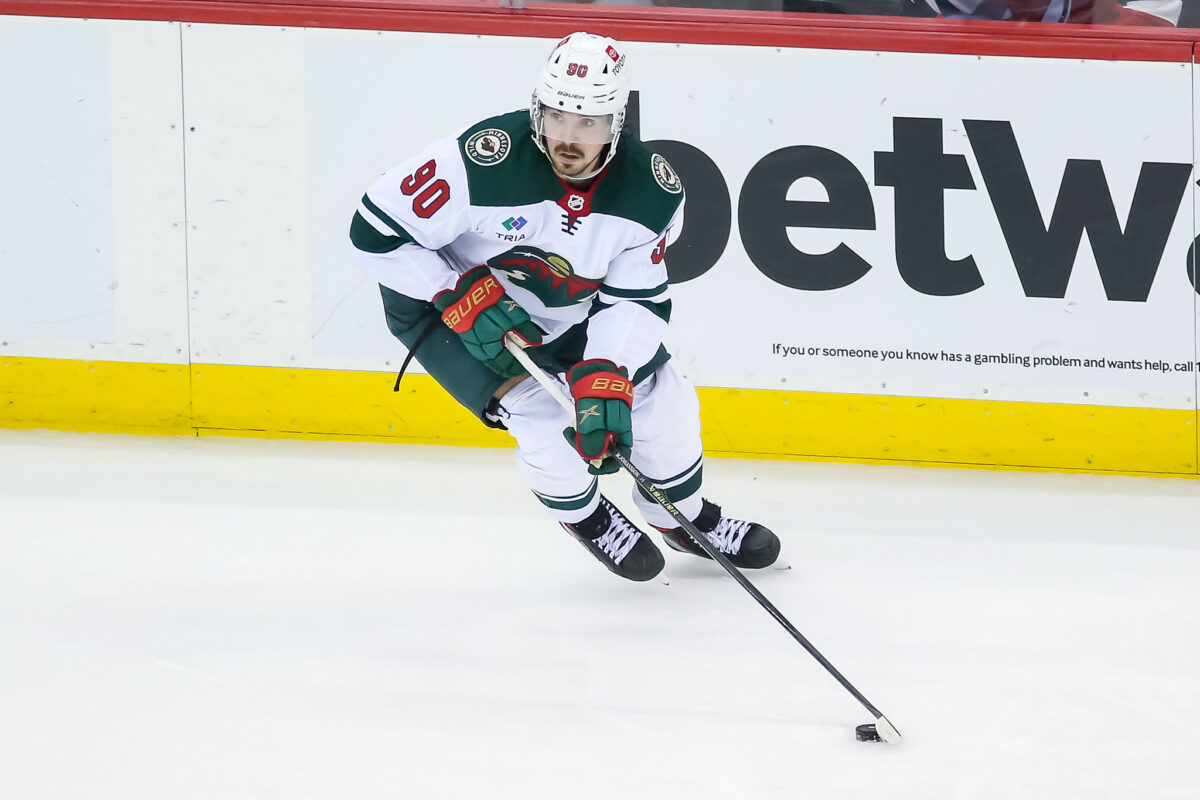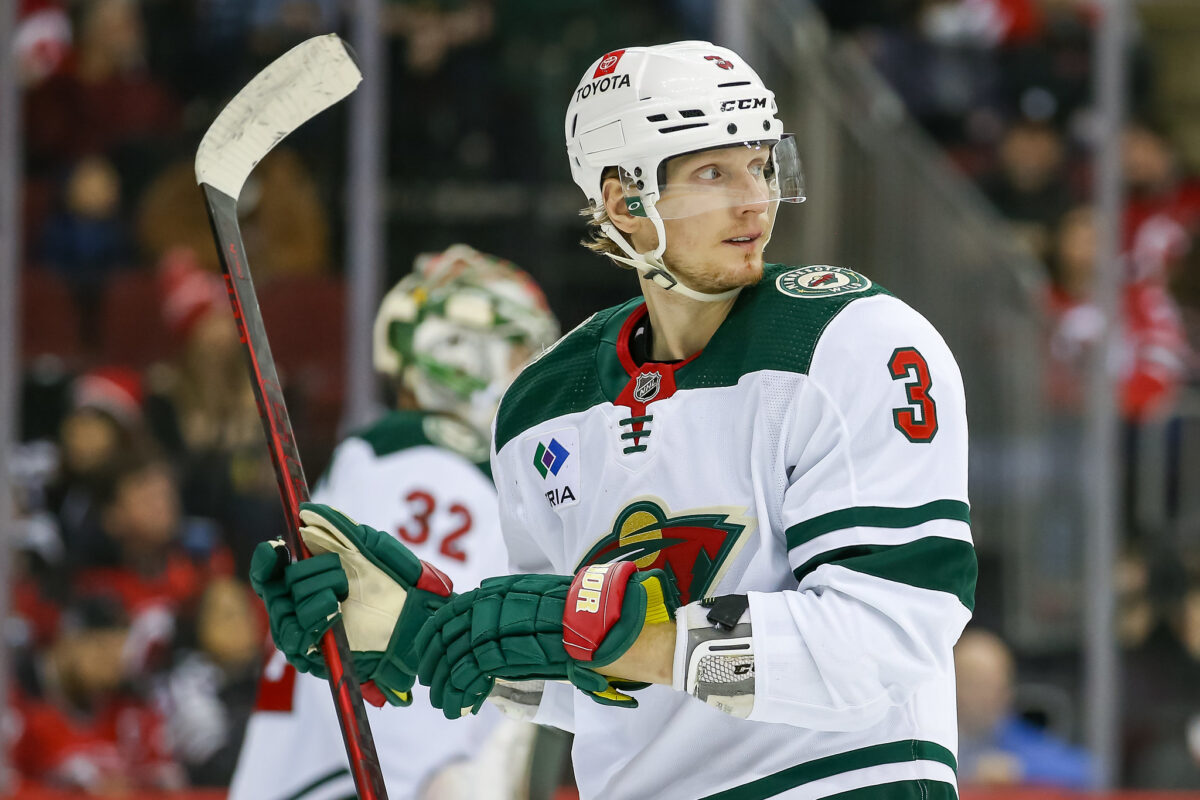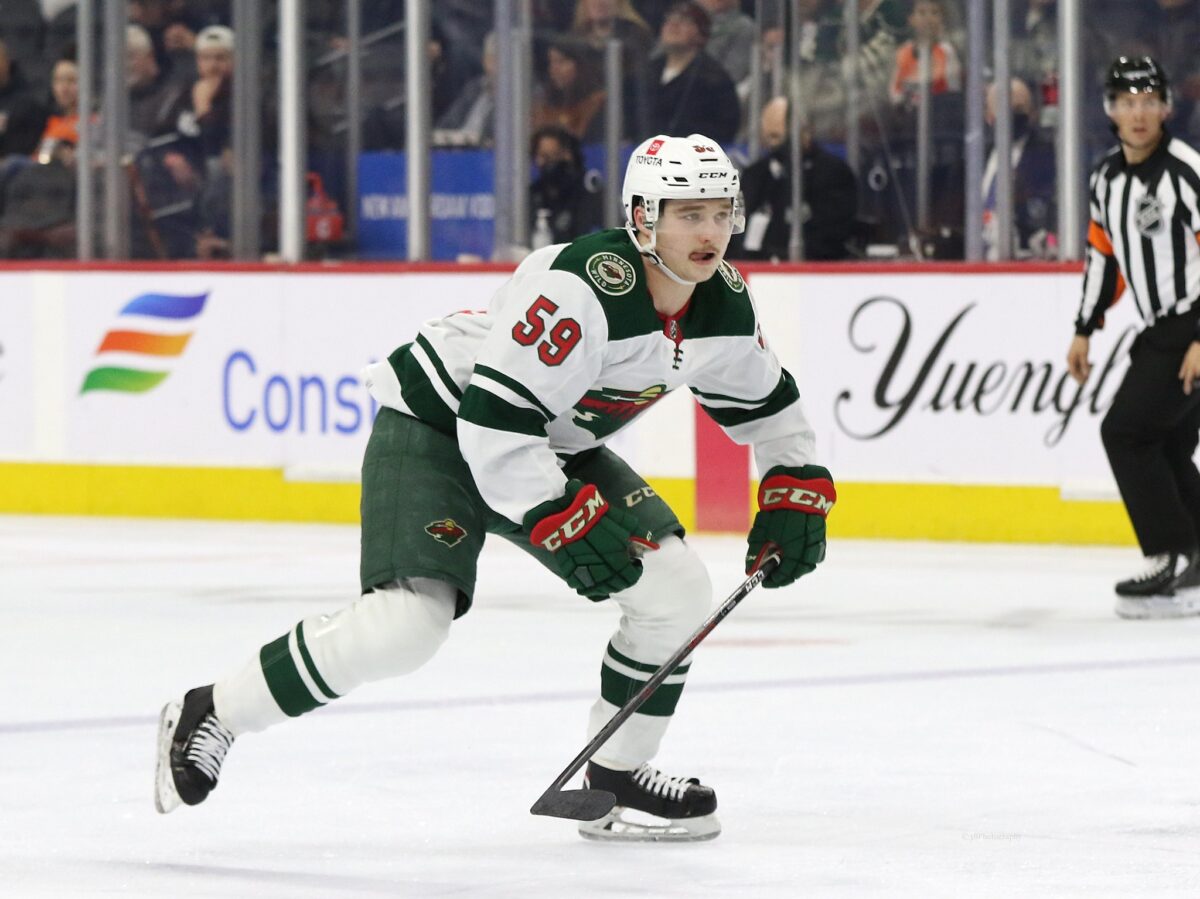The Minnesota Wild are in a salary cap log jam of their own making, but they are not alone. A large percentage of NHL teams are struggling to put a full roster together under the current salary cap of $82.5 million. Despite the obvious relief needed, there is a good chance the cap is only increased by $1 million next season; that’s barely enough to cover a league minimum salary or entry-level contract.
As such, the Wild and a lot of other teams are going to have to be very creative this offseason if they plan on being competitive in 2023-24, as we have already seen with the recent three-team trade involving the Philadelphia Flyers, Los Angeles Kings, and Columbus Blue Jackets. Here are three bold predictions on what moves the Wild will make this offseason.
1) Wild Sign Zero Unrestricted Free Agents
The Wild have a substantial list of unrestricted free agents (UFAs) that are potentially departing the team. From Gustav Nyquist and John Klingberg to Ryan Reaves and Matt Dumba, if those players make it to free agency on July 1, they are not coming back. They have already signed the player they wanted when they gave Marcus Johansson a two-year extension as his play on the opposite wing of Matt Boldy has helped elevate that line dramatically.

According to Michael Russo, Joe Smith, and Shayna Goldman of The Athletic there is the potential for Ryan Reaves to return and bring his locker-room energy with him. They write:
There’s clearly mutual interest from the Wild and Reaves in the 36-year-old returning. Guerin likes his presence on the ice, with his physicality, and off the ice, with his alpha personality, especially with the team expected to lose Dumba, its vocal leader.
from “Solving the Wild’s salary-cap crunch: What are GM Bill Guerin’s free agency and trade options?” – The Athletic – 05/05/2023
The Wild have a deep list of restricted free agents (RFAs) that will need to be looked at before they can hand out any cash to the perpetual fourth-liner. If Reaves is not locked in by July 1, there is definitely another team out there that will offer the enforcer more money or term than the Wild currently can.
So, what about other UFAs?
There is a solid list of free agents that will be available for new contracts, but players that enter free agency are looking to get paid, and the Wild need to accumulate value contracts, not enter into bidding wars to bring in a specific asset. Unless a player waits too long and gets picked up late in the summer on a one-year deal, similar to Sam Steel last year, it just doesn’t seem possible.
2) Half the Defensive Core is Gone
The Wild had eight main players that made up their defensive core through this season, seven of whom played in at least half the team’s games, and the other, John Klingberg, was acquired at the trade deadline from the Anaheim Ducks and became a roster main-stay from that point on. While the Wild’s defence was solid, an array of cracks have become visible and this may be the perfect offseason to address them.

A trio of free agents in Klingberg, Dumba, and Calen Addison are all likely on they’re way out. Klingberg and Dumba, both UFA’s, are going to price themselves out of returning to the team. There are teams that will offer more money and more years for what those individual players bring to a team. Klingberg’s absence will be minimal compared to the loss of Dumba and the sheer number of minutes he has played since the Wild drafted him in 2012.
The young Calen Addison has not played many minutes but defensive mistakes and inability to adjust forced the coaching staff to sit him multiple times and for relatively large chunks of the season. The disconnect appears to have widened and there is a strong possibility the Wild will move Addison rather than offer the rather small-bodied RFA a new deal.

The final player unlikely to return is the Minnesota native Alex Goligoski. Goligoski is headed into his third season with the Wild, but fell off hard from the top-pair player he once was, only collecting six points in his 46 games this season. Apparently unhappy with limited play time, his $2 million contract could be traded or bought out if need be.
3) 21st-Overall Pick is Traded
The Wild have not been keen on trading their first-round picks away — in fact, there have only been two instances where they did not make a selection in the first round, in 2013 and 2017, but they currently possess a prospect pool that is the best it has ever been. The depth of players available in almost every position is fantastic, and the fact that they have stayed competitive while building that depth is even more impressive. So, why would they ever trade their first-rounder in such a deep prospect pool?
Related: Wild’s 1st Round Needs & Targets at the 2023 NHL Draft
Well, simply put, they don’t need the middle-six forward or bottom-four defenseman that the 21st-overall pick is likely to turn out to be. They need a roster player on a good deal to stay competitive or they need to trade up and take a swing at someone with true star potential. Both of those trades are hard to make and can be very expensive, costing additional picks, players, or prospects to get it done, but the potential return is well worth it in either case.
Offseason Could Go Two Ways
When it comes down to it, the Wild will have to choose at some point about the type of offseason they are going to have. Option one is to maintain the status quo, sign the players they can bring in some bottom-six players and quietly hope something magical happens next season. Option two is to make a push to get past the first round of the playoffs, make some hard decisions, and make some noise. Personally, I wouldn’t mind the little bit of risk with option two, especially if it means finally getting a number one center.
